How To Protect Hair When Swimming: A Complete Guide
Put an end to the worries about your tresses with these tips as you swim your heart out.
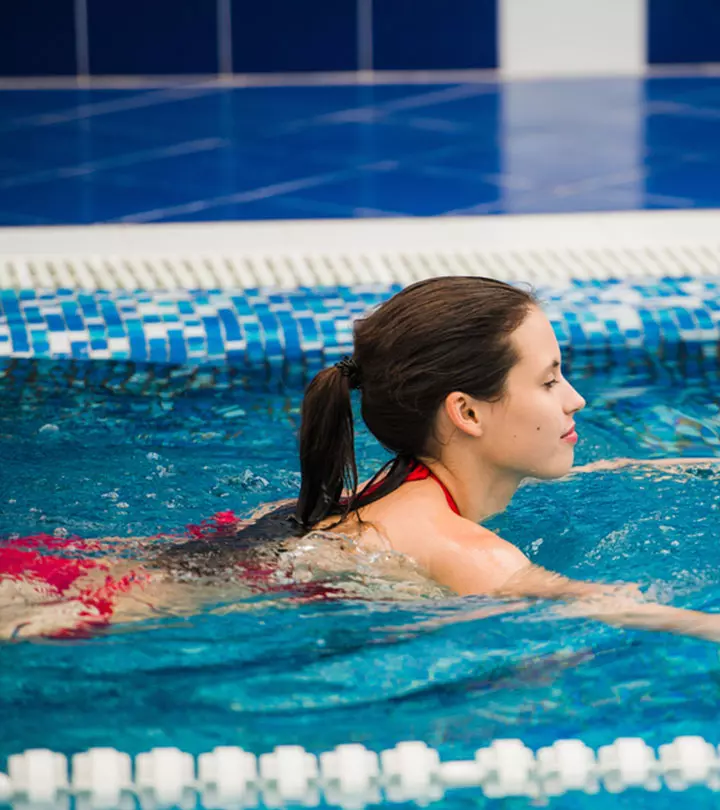
Image: Shutterstock
Swimming is an enjoyable exercise that helps the body relax and refresh. However, swimming frequently in chlorinated water can dry out and damage your hair, causing brittleness and split ends. If you have been wondering how to protect your hair while swimming, we have you covered. Appropriate pre- and post-swimming hair care methods are vital to prevent any damage. This article will provide you with a few pointers on how to protect hair when swimming. Scroll down for a complete guide on how you can protect your tresses while you swim without worry!

In This Article
Hair Care For Swimmers – Tips To Protect It From Chlorinated Water
If you are wondering how to protect hair when swimming, check out the many effective methods listed below, such as:
Pre-Swimming Hair Care
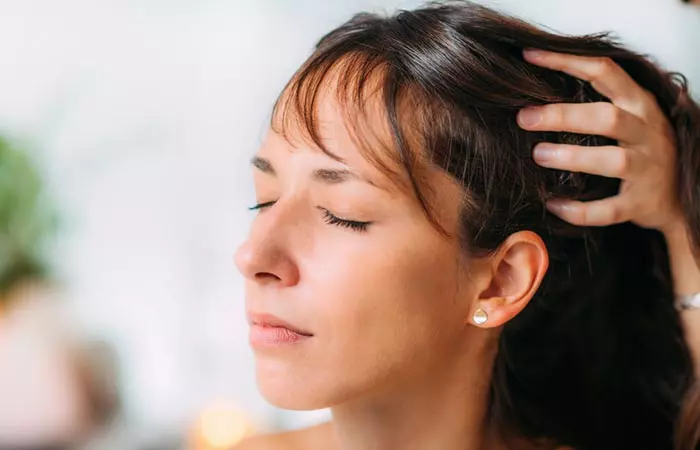
- Oil Your Hair
Oiling is the primary and most important step to protect the hair from chlorinated water. Oil penetrates the hair shaft and prevents water from entering into the cuticle, lowering the chances of hygral fatigue (swelling and drying of the cuticle). Oil can fill the gaps between the cuticle cells and prevent chlorine from entering into the cuticles (1).
Applying a swimmer’s hair oil specially formulated to protect hair from chlorine and UV rays before swimming makes the hair waterproof and shields it from damage. It also prevents the leaching of hair color and keeps any blonde tones from turning green. Use coconut or olive oils to nourish and hydrate the hair during and after swimming.
Applying coconut oil (rich in lauric acid) can help prevent protein loss caused by chlorine in the water and reduce further hair damage (2). Massage coconut oil gently onto the damp hair to protect it from chlorinated water.
You can also apply it before swimming, as the oil fills the gaps or openings in your hair, making it more water-resistant. A study published in the International Journal Of Cosmetic Science found that coconut oil may prevent protein loss and reduce porosity in the hair, maintaining hair strength and color (3). This protective effect may be applied to chlorine exposure, as the oil forms a barrier that could similarly prevent chlorine from damaging the hair and causing color fading.
A study, conducted between October 2016-2017, showed that out of the 1899 individuals, 327 (17.2%) reported trying standardized scalp massages(SSM). Among them, 68.9% reported either stabilization of hair loss or regrowth.
 Quick Tip
Quick Tip- Take A Quick Shower With Non-Chlorinated Water
Showering before swimming can help prevent chlorinated water from penetrating the hair. While we all think that we may know how to shower properly, following the right process and a few tricks can help keep your hair healthy and nail your shower routine. You may try washing your tresses with a swimmer’s shampoo that can form a protective layer on your hair, minimizing chlorine absorption.
- Apply Leave-In Conditioner
A leave-in conditioner is a humectanti A widely used ingredient in hair products that helps to keep the tresses hydrated by drawing moisture from the environment. that protects the hair from chlorine water damage. It not only nourishes your hair but also forms a protective layer against chlorine and other harmful chemicals in the pool.
A leave-in conditioner neutralizes the electrical negative charge of the hair fibers by adding positive charge and lubricates the hair cuticles, making them hydrophobic (waterproof) (1). It mimics the hair natural lipidi The fatty acid layer over the hair shaft that protects it from external damage, contributing to the health, strength, and luster of the hair. content, seals the cuticle, and minimizes frizz and breakage.
- Spritz Some Hairspray
If you are into outdoor swimming, use an SPF hair spray for sun protection.
A hairspray with botanical ingredients nourishes the hair and protects it from UVA and UVB sun damage. It also prevents the fading of hair color. You can also use a hat or a scarf when you are not in the water.
 Quick Tip
Quick TipHair Care While Swimming
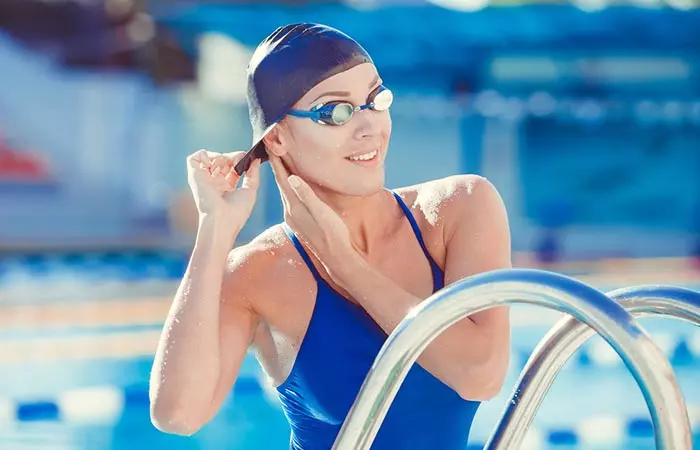
- Wear A Swimming Cap
Wearing a swimming cap or a hair wrap is probably the best way to protect the hair from the damage caused by chlorinated water. It covers the entire head, prevents contact with water, and keeps the hair dry. The interesting part is that it has a utilitarian and fashionable approach. You can protect the hair and also match the cap color with your swimwear. Opt for a high-quality swimming cap made from silicone or latex that can offer better coverage and protection against chlorine. Additionally, choose the right size that provides a snug fit so that water does not enter as it may lead to damage later.
Note: If you are not comfortable with wearing a swimming cap, use a hair tie and make a bun on the top of the head and avoid dampening it as much as possible.
- Wear Protective Hairstyles
If you swim daily, choose hairstyles that keep your hair secure and minimize tangling and damage from chlorine and water. Low buns, braids, twist braids, or high ponytails are good options to wear underneath the swim cap. You can also apply some protective gel to prevent the chlorine and water from damaging your tresses.
- Choose Outdoor Pools
Swimming in outdoor pools is better for your hair than indoor pools because the chlorine evaporates more quickly into the air, lowering its concentration in the water. This may reduce the amount of chlorine that could be absorbed by your hair and skin, making it a healthier and better option when available. However, it’s not only about the hair. Paying attention to important skin care tips for swimmers also to ensure their skin remains healthy despite frequent exposure to chlorine and other pool chemicals. However, avoid swimming outdoors when it’s very sunny.
Post-Swimming Hair Care
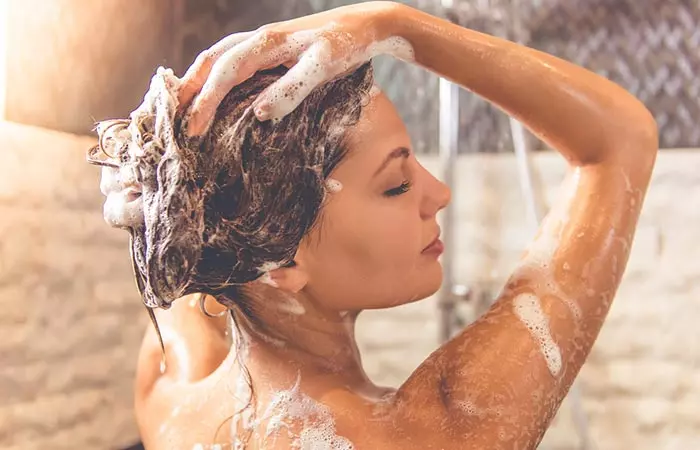
- Wash Your Hair Thoroughly
Rinse your hair immediately after swimming. It helps clear the buildup of chlorine and other harmful chemicals. A quick shower removes salt water (in case of outdoor swimming) and all the residue from the scalp. To safeguard your hair from chlorine damage, understanding what chlorine does to your hair can help you take preventive measures to keep your hair healthy and strong.
- Shampoo Your Hair
Chlorine deposition is a disaster for your hair texture and color. Even saltwater bleaches blonde hair, making it dry and frizzy. The best way to rinse the buildup is by using an anti-chlorine shampoo or swimmer’s shampoo. It not only removes excess deposits from the hair and the scalp but also nourishes the tresses. You may also consider using a clarifying shampoo in your weekly routine that can effectively eliminate chlorine buildup, bringing back your hair’s natural luster and softness.
- Apply A Deep Conditioner
A deep conditioner can fight dryness, moisturize, and nourish the hair. You can also apply a leave-in conditioner or swimmer’s conditioner for extra nourishment and shine. A deep conditioning mask or a swimmer’s hair mask is also a great option to restore nourishment.
Anna, a beauty and lifestyle vlogger, recommends always taking a deep conditioner along and using it immediately after rinsing the hair after a swim. She states, “Allowing my hair to soak up some conditioner oil on my way home just makes it so much easier to detangle while I’m in the shower or after the shower. And it really helps to bring moisture back into my hair (i).”
- Comb Your Tresses
Combing with a wide-toothed brush controls frizz and is an easy way to detangle your hair without pain. It loosens the tension built up in the hair and reduces breakage.
There are certain things you should avoid in post-swimming hair care. Check out the following section to know more!
Key Takeaways
- Use a swim cap or pull your hair into a braid or bun to reduce exposure to the water.
- Apply a leave-in conditioner or oil, which will shield your wet hair from the chlorinated pool water.
- After swimming, rinse your hair thoroughly to remove chlorine or salts, and you can also use clarifying shampoo to remove buildup.
- Nourish your hair with natural oils and deep conditioners frequently, and go for a trim to avoid split ends routinely.
Things To Avoid In Post-Swimming Hair Care

The answer to how to protect hair when swimming doesn’t just lie in your pre-care routine. Post-swim hair care is just as important to keep your hair healthy.
- Avoid Dryers Post-Swimming
Blow drying can damage the hair, making it more dehydrated. It is better to towel dry your hair and let it dry naturally.
- Avoid Washing The Hair More Than Once A Day
Though shampooing the hair helps keep the scalp healthy and oil-free, doing it more than once a day might make your hair dry and brittle.
Scroll down to find how chlorine and saltwater can damage the hair.
How Chlorine And Saltwater Damage The Hair
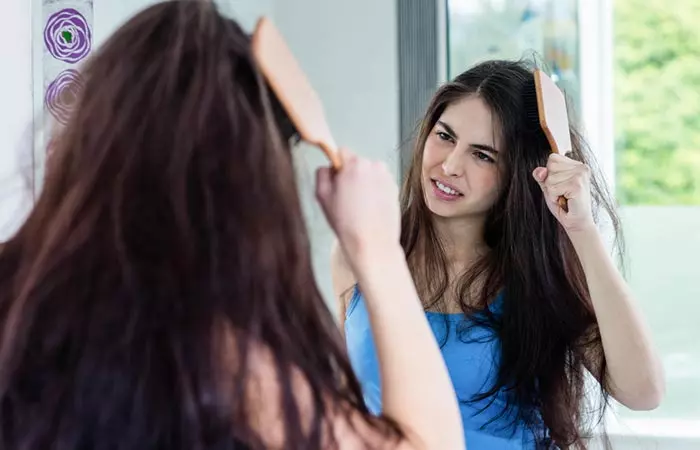
Chlorine water can turn the hair (and blonde hair) green. It reacts with hair keratin and forms water-soluble chemicals that bond with the hair fiber, resulting in hair breakage, dryness, and hair loss.
The chlorine and the other chemicals in the pool strip the scalp’s natural oils and make the hair dry and frizzy. Regular exposure to chlorinated water increases the hair porosity and causes swelling of the scalp, leading to intense damage (1).
Chlorine and saltwater affect color-treated hair. They dry out the hair and wick off natural oils from the scalp. A study on Japanese elite swimmers shows that hydrochloric acid in pool water penetrates deeply into the hair cortexi The middle layer of a hair shaft that imparts strength, shape, texture, and color to the hair fiber. . This leads to the oxidation and degeneration of melanosome (a pigment responsible for the hair color) (4). If your scalp is sensitive, chlorine may cause itchiness and scalp inflammation.
One of the best ways to keep your hair protected while swimming is to know which products you can use. There are three main hair types – straight, wavy, and curly – and each of them need different care products. Keep reading to learn more.
Tips For Different Hair Types To Protect Hair When Swimming
Your hair will react to swimming pool water differently, depending on its texture and type. So you need to use the right hair care products to ensure that your hair is in tis best shape and not affected by the chlorine in pools. Here’s some tailored advice for different hair types to protect your hair while swimming:
1. Curly Hair:
- Oiling: Use a rich, thick oil like coconut oil or argan oil.
- Conditioner: Opt for a moisturizing leave-in conditioner to help manage frizz and keep curls hydrated.
- Shampoo: Choose a sulfate-free, hydrating shampoo to keep curls soft and prevent dryness.
- Combing: Use a wide-tooth comb to gently detangle and avoid breakage.
2. Straight Hair:
- Oiling: Light oils like jojoba oil or grapeseed oil work well as they don’t weigh down straight hair. Apply sparingly to the ends.
- Hair Spray: A light-hold hairspray can add some structure and prevent flyaways.
- Leave-in Conditioner: Choose a leave-in conditioner with light moisturizing properties to prevent limpness while adding a smooth texture.
- Shampoo: Use a gentle, balancing shampoo to avoid stripping natural oils.
3. Colored Hair:
- Oiling: Go for argan oil or coconut oil, which nourishes and helps seal the color.
- Hair Spray: Use a color-safe, protective hair spray to shield against UV and chlorine damage.
- Conditioner: A leave-in conditioner with UV protection is perfect for maintaining both moisture and color vibrancy.
- Shampoo: Use a sulfate-free, color-protecting shampoo to keep the color from fading and hair from drying out.
4. Fine Hair:
- Oiling: Choose a lightweight oil like almond oil or grapeseed oil to prevent weighing the hair down.
- Hair Spray: Use a light-hold, volumizing hairspray to give your hair texture and volume without making it flat.
- Conditioner: Opt for a light leave-in conditioner to hydrate without leaving residue.
- Shampoo: A gentle, volumizing shampoo works best for fine hair to maintain volume and prevent limpness.
5. Thick Hair:
- Oiling: Use heavier oils like shea butter or coconut oil.
- Hair Spray: A strong-hold hairspray is useful for thick hair to keep it in place while swimming.
- Conditioner: A moisturizing, detangling leave-in conditioner helps manage thick hair and prevent frizz.
- Shampoo: Go for a moisturizing shampoo to combat dryness while maintaining thickness.
6. Damaged Hair:
- Oiling: Opt for argan oil or castor oil to repair and protect the hair from further damage, focusing on the ends.
- Hair Spray: Use a nourishing spray with heat-protectant properties.
- Conditioner: Choose a reparative leave-in conditioner that helps restore moisture and elasticity.
- Shampoo: Use a repairing, hydrating shampoo to help restore strength and softness.
Infographic: Important Tips to Protect Hair When Swimming
Who doesn’t appreciate a leisurely swim every now and then? Although you may love swimming, your hair may not feel the same. Swimming pools are filled with chlorine that can harm your hair in unpleasant ways, making it rough, unruly and even fading lovely hair colors.
Wondering how to keep your hair safe when swimming? Do not fear; we have mentioned everything in the infographic below. Check it out! Illustration: StyleCraze Design Team
Swimming is arguably one of the best exercises that not only enhances your fitness level but also relaxes your mind and body. But, it could lead to hair damage due to the chlorine content in pool water. So, how to protect hair when swimming? Remember to follow the pre and post hair care tips mentioned above to keep your tresses healthy and damage-free. A few pre hair care tips include oiling your hair and applying leave-in conditioner. Some post hair care tips include washing your hair thoroughly after swimming and using a deep conditioner. These simple yet effective care tips teach you how to protect your hair when swimming without having to shell out money on expensive products or treatments. So, follow them and swim away merrily!
Frequently Asked Questions
How often should a swimmer wash their hair?
Swimmers need not wash their hair regularly. Washing the hair two to three times a week with a shampoo and conditioner can help remove the chlorine buildup.
Can I go swimming if I dye my hair?
Yes, you can go swimming if you have bleached or dyed your hair. Follow the tips mentioned in the article to prevent the hair color from fading.
What is the best hairstyle for swimming?
Braids, ponytails, and top knots are the best hairstyles for swimming as they decrease the contact area and protect the hair. You can use hair clips or a bandana to secure the front of your hair.
Will swimming once a week damage my hair?
The chlorine in the pool water can damage your hair, whether you go for a swim regularly or once a week. You can reduce the risk of damage by wearing a swim cap, deep conditioning your hair, or using hair sprays.
Illustration: How To Protect The Hair While Swimming Every Day
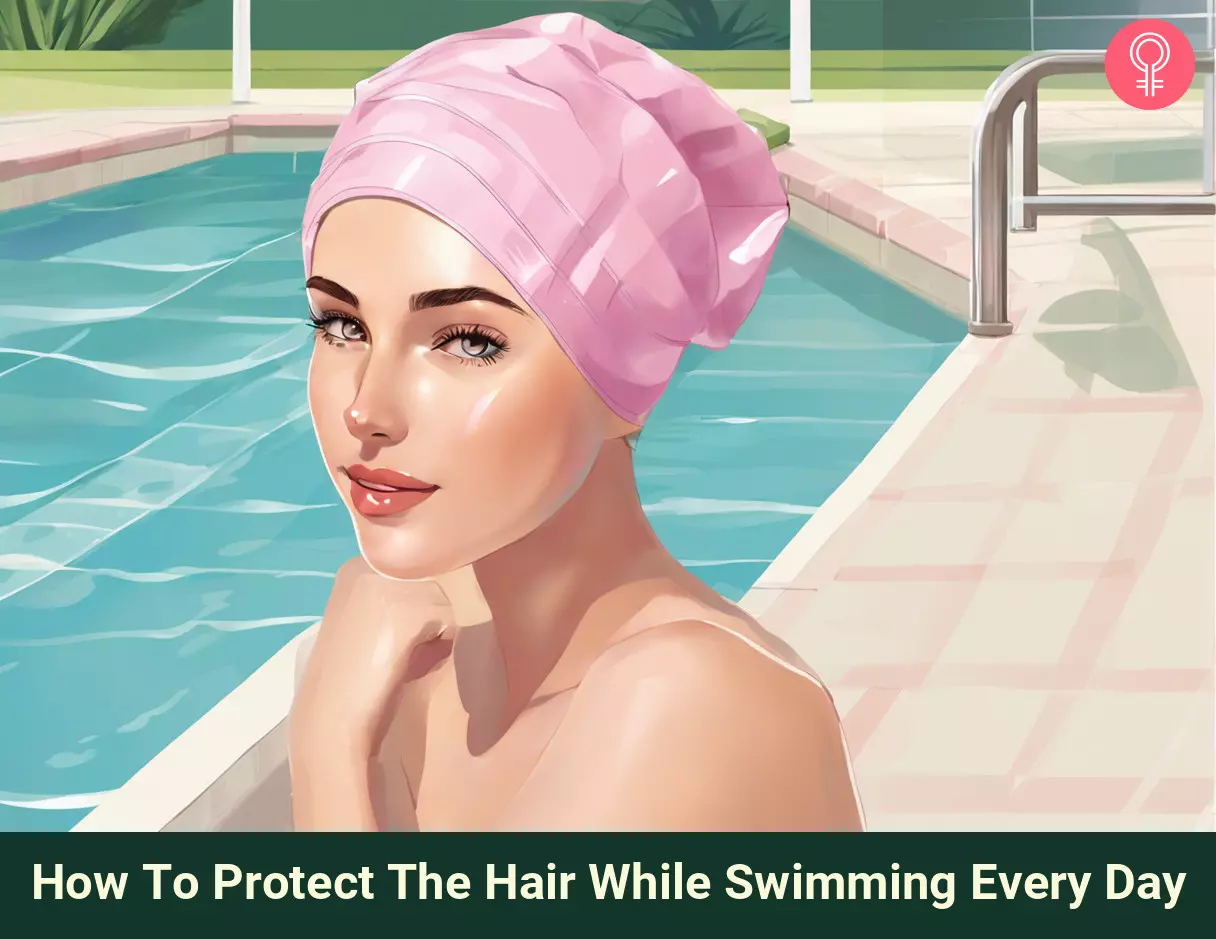
Image: Stable Diffusion/StyleCraze Design Team
Learn how to take care of your hair and skin while swimming! Get tips on how to protect your hair and skin from chlorine and other pool chemicals in this video. Watch it now!
Personal Experience: Source
StyleCraze's articles are interwoven with authentic personal narratives that provide depth and resonance to our content. Below are the sources of the personal accounts referenced in this article.
i. How I Protect My Hair When Swimminghttps://www.youtube.com/watch?v=t68t7IhMHLc
References
Articles on StyleCraze are backed by verified information from peer-reviewed and academic research papers, reputed organizations, research institutions, and medical associations to ensure accuracy and relevance. Read our editorial policy to learn more.
- Hair Cosmetics: An Overview
https://www.ncbi.nlm.nih.gov/pmc/articles/PMC4387693/ - Effect of mineral oil, sunflower oil, and coconut oil on prevention of hair damage
https://pubmed.ncbi.nlm.nih.gov/12715094/ - Benefit of coconut-based hair oil via hair porosity quantification
https://pubmed.ncbi.nlm.nih.gov/35377477/ - Hair-discoloration of Japanese elite swimmers
https://pubmed.ncbi.nlm.nih.gov/11092265/
Read full bio of Dr. Meena Konada
Read full bio of Anjali Sayee
Read full bio of Ramona Sinha
Read full bio of Krati Darak







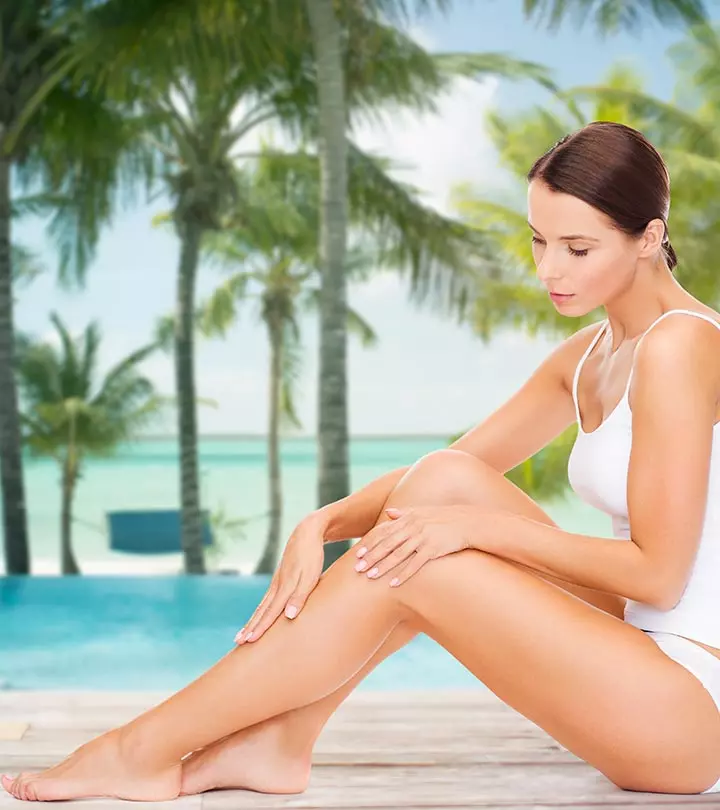

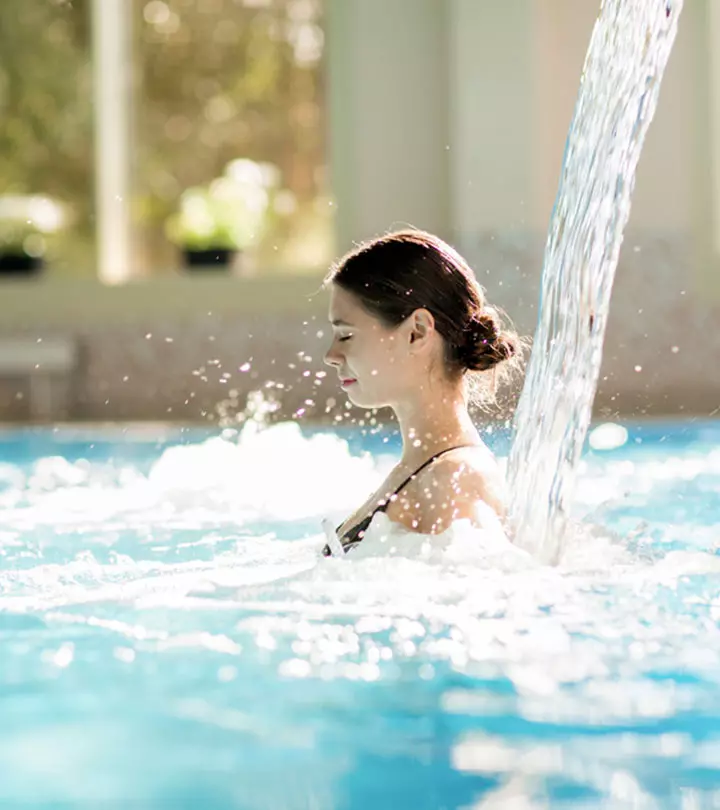
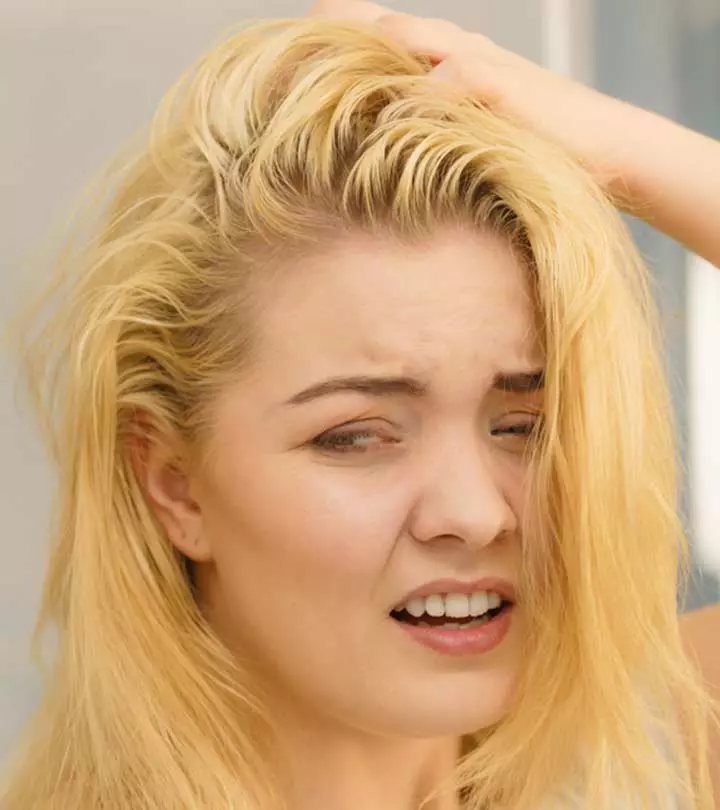

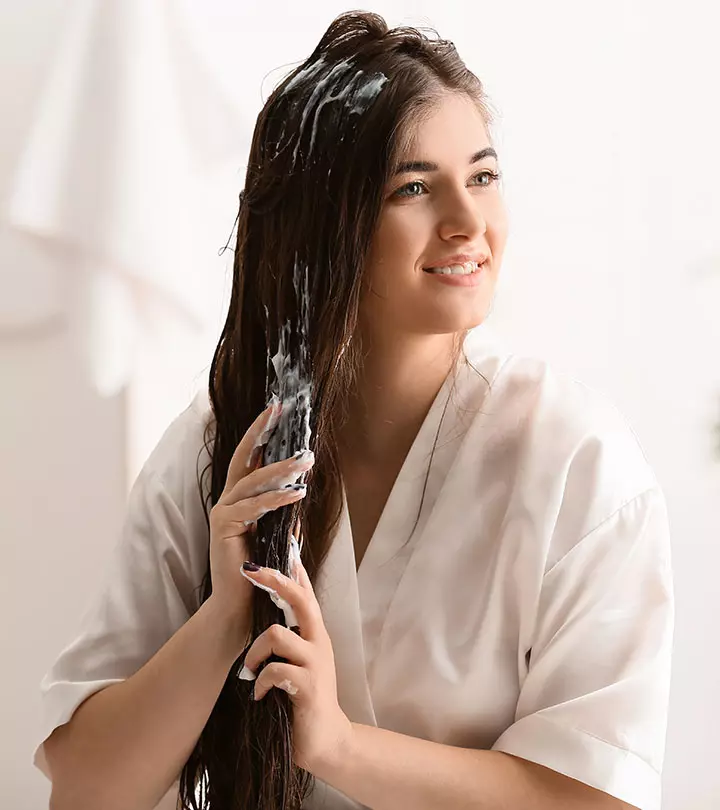
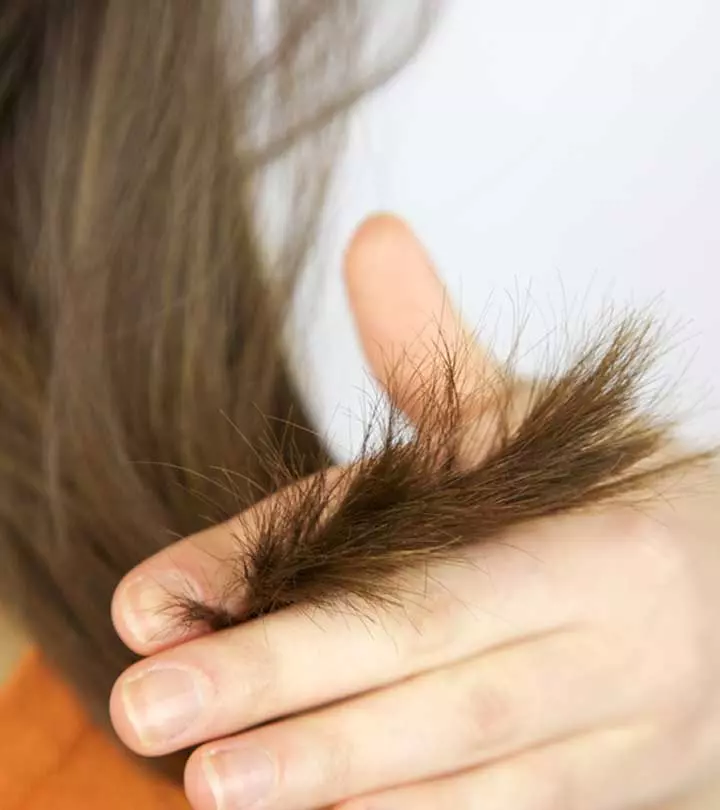
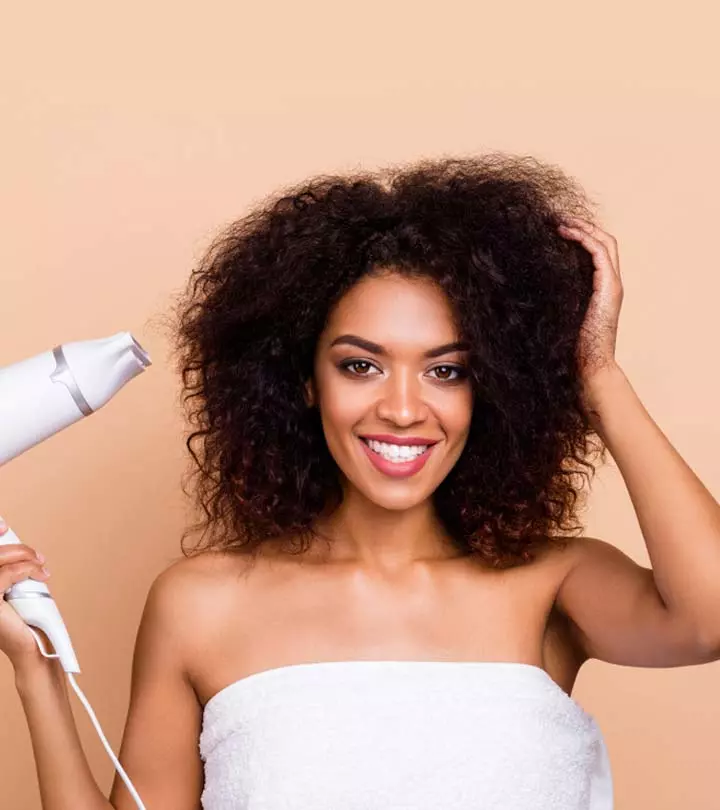
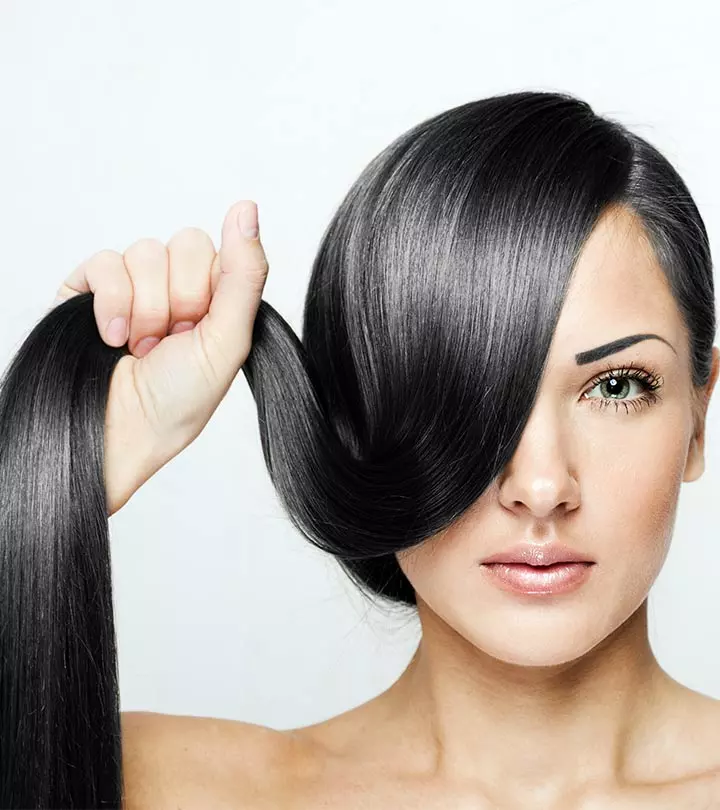
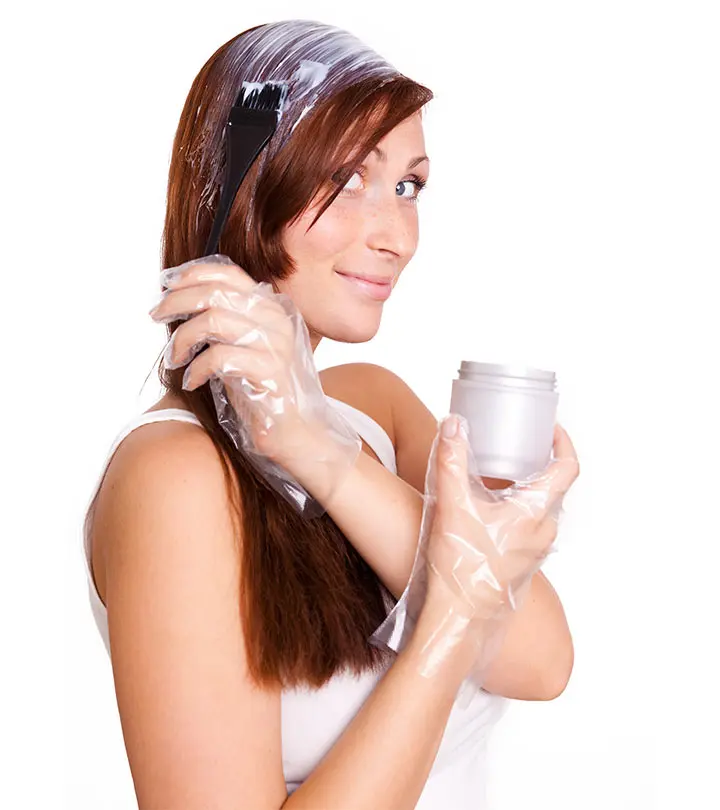
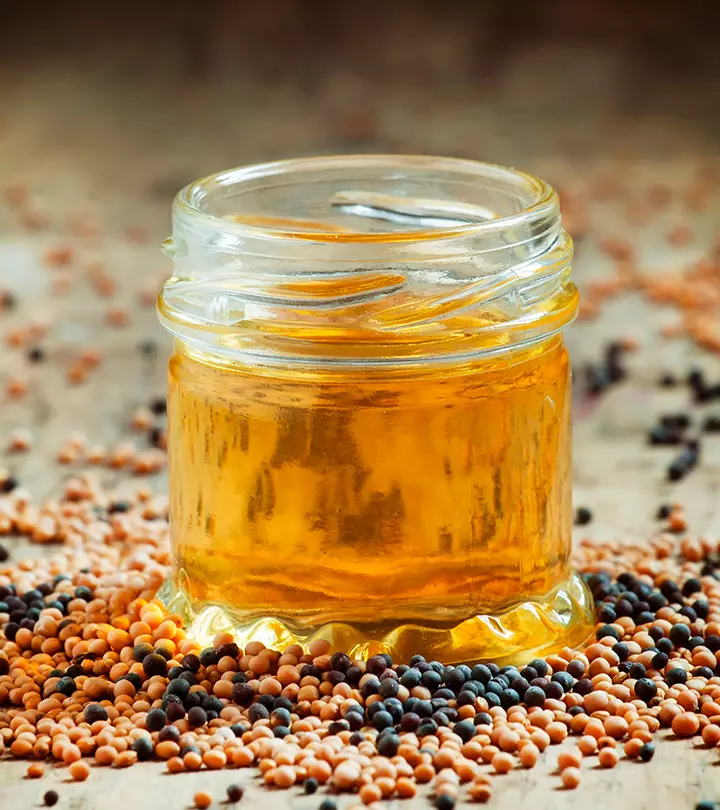
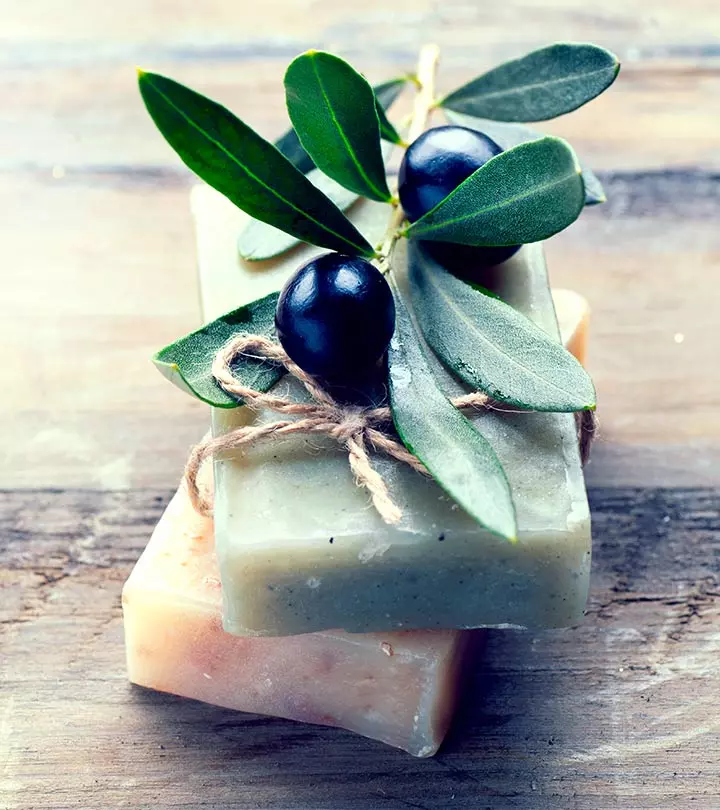

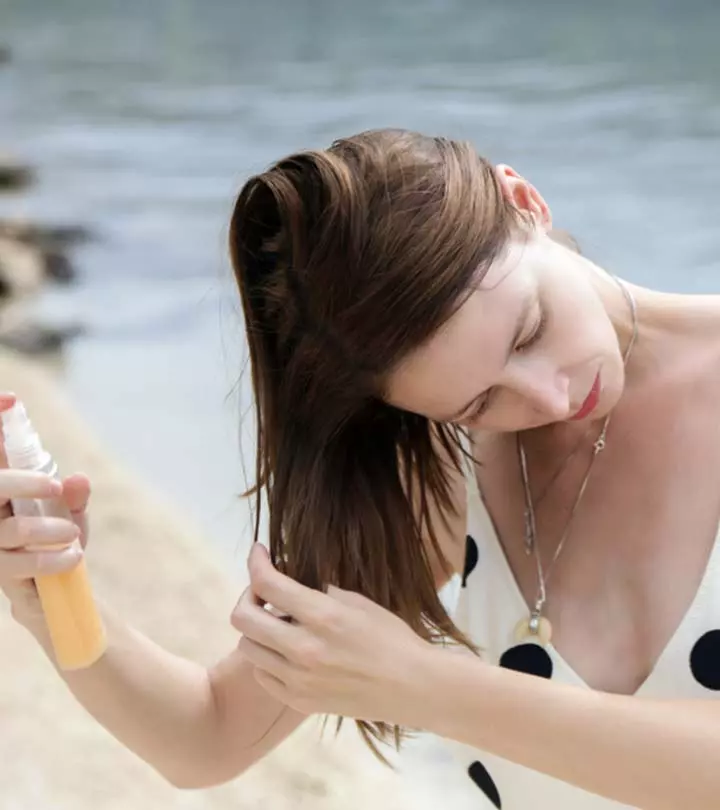
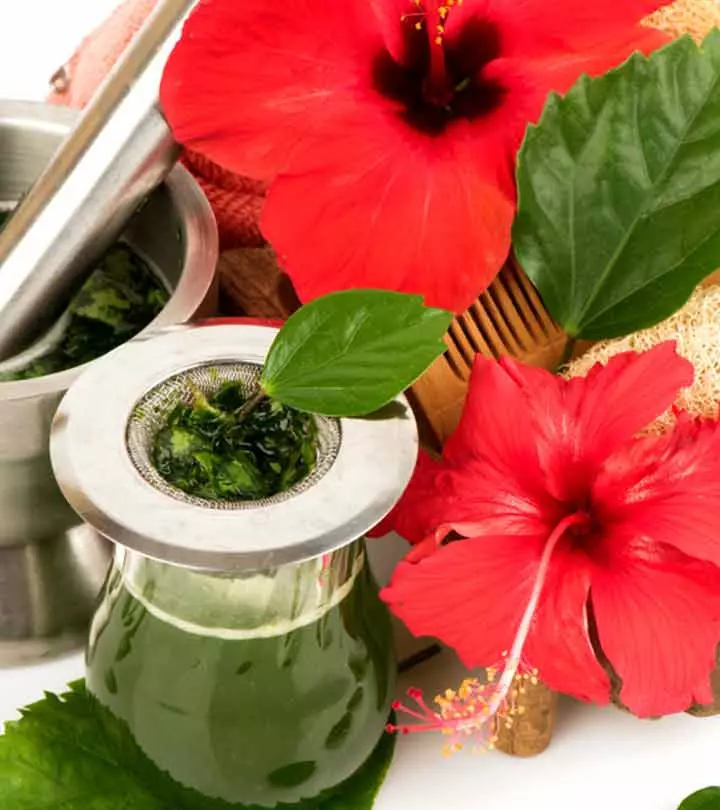
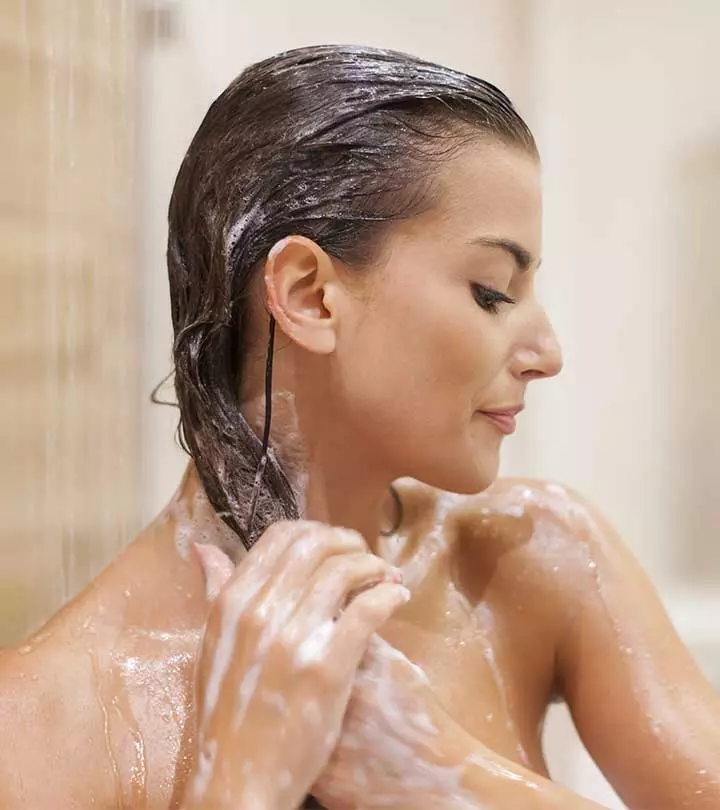
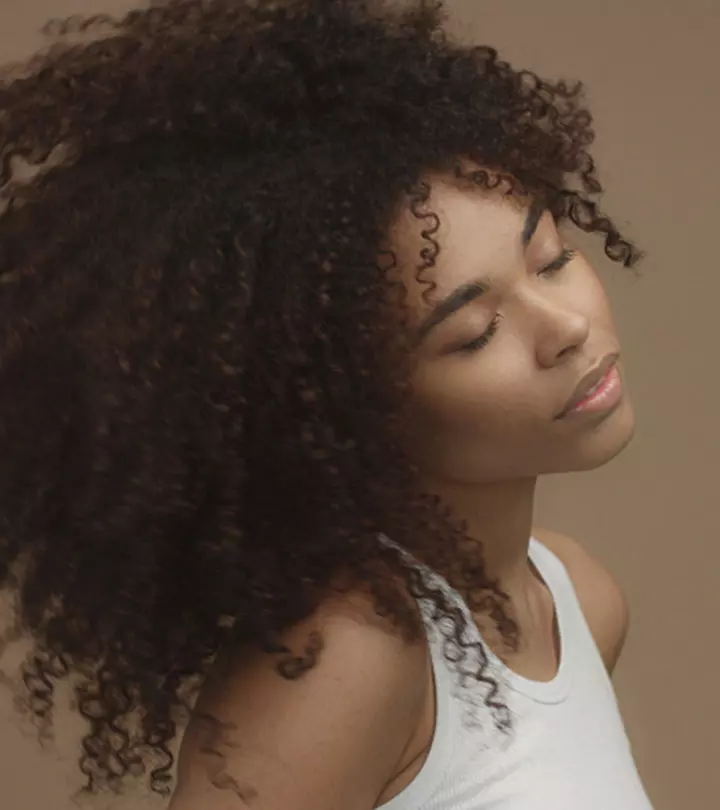
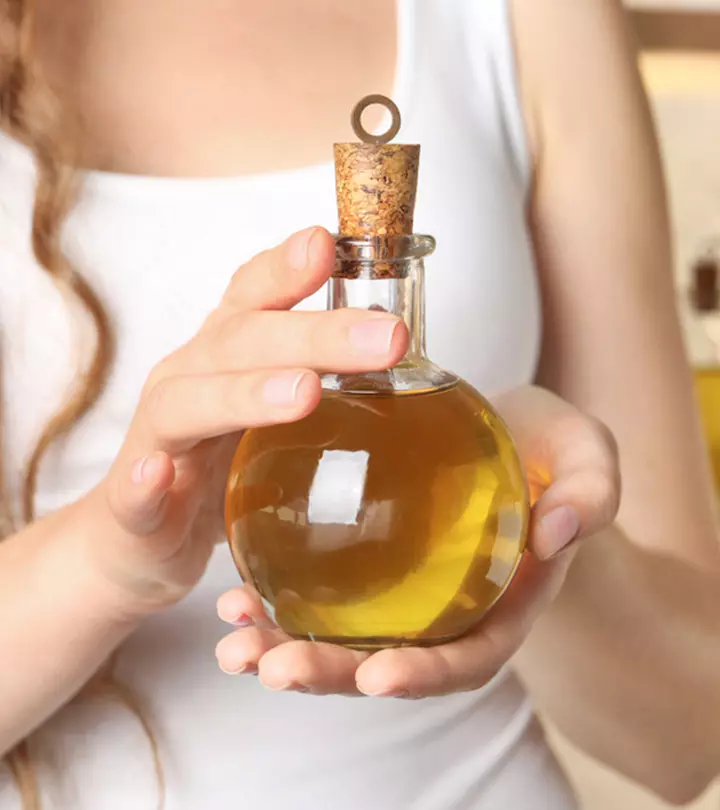
Community Experiences
Join the conversation and become a part of our empowering community! Share your stories, experiences, and insights to connect with other beauty, lifestyle, and health enthusiasts.